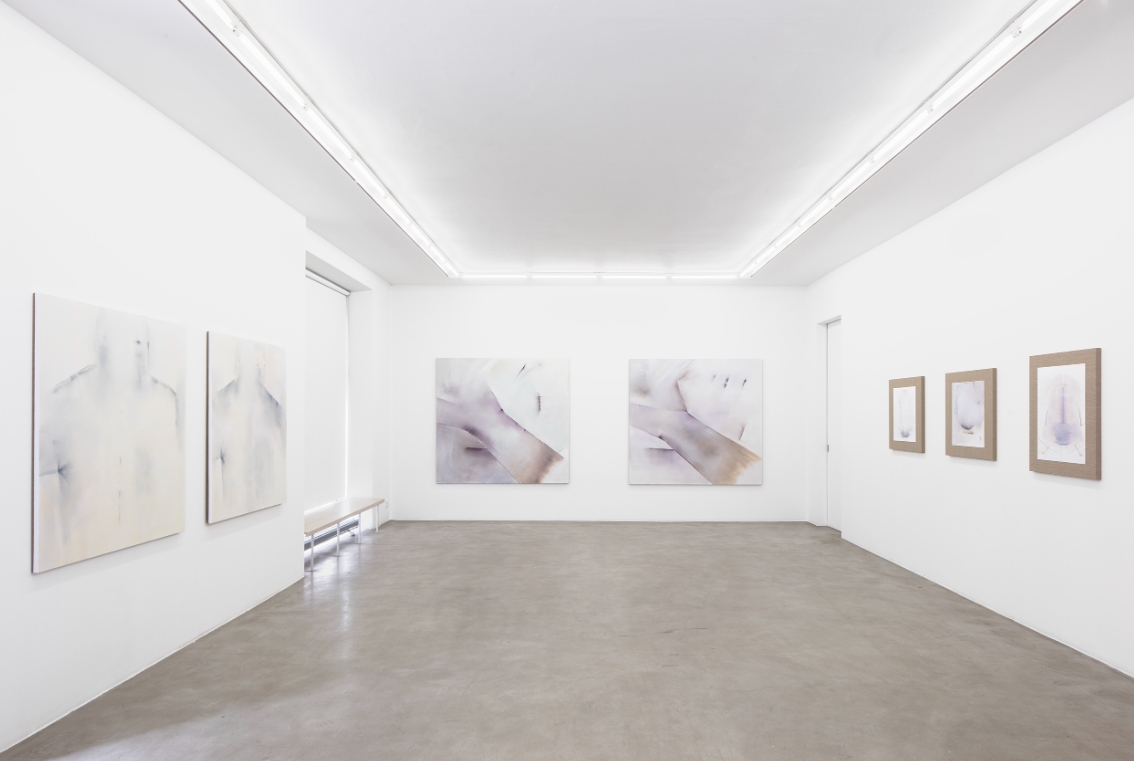The shapes in the highly layered works of the Liminal Space series are seen through a kind of surface, as if a membrane or veil intervened between the viewer and the motif – and that is, in fact, the subject of the work. One of the sources of inspiration for the exhibition is Pieter Bruegel the Elder’s 16th century drawing Beekeepers. Roos expands the strange and ambiguous view to create large, dimly shimmering surfaces and shapes filled with tension. Her Beekeepers diptych shows a sturdy human figure depicted with sculpture-like rigidity, as if the mass inside were protruding to establish the tautly curved outlines of the body. The stiff figure embodies a mood charged with menace.
When faced with paintings composed of surfaces and shapes held by tension, it is at times difficult for the viewer to tell whether one is looking at something very large or something very small. Although there are identifiable motifs in the works, such as the trunk or branch of a tree, or a clean incision or an eye, the open and flexible character of the paintings can also be seen as a key feature alongside the motifs. There is room to roam in the images.
The overall palette builds into an almost pale, monochromatic, breathtaking surface, with reddish, brown and purple tones. In the large painting Melancholia, one can see references to Albrecht Dürer’s etching and the Lars von Trier’s film of the same name, while the dark, circular form in the work seems to be floating in some sort of a soft, intangible space.
Nina Roos’s paintings make one want to stay a moment and observe. They exist like some kind of fascinating creatures whom one wants to spend time with.
–Hanna Huitu




